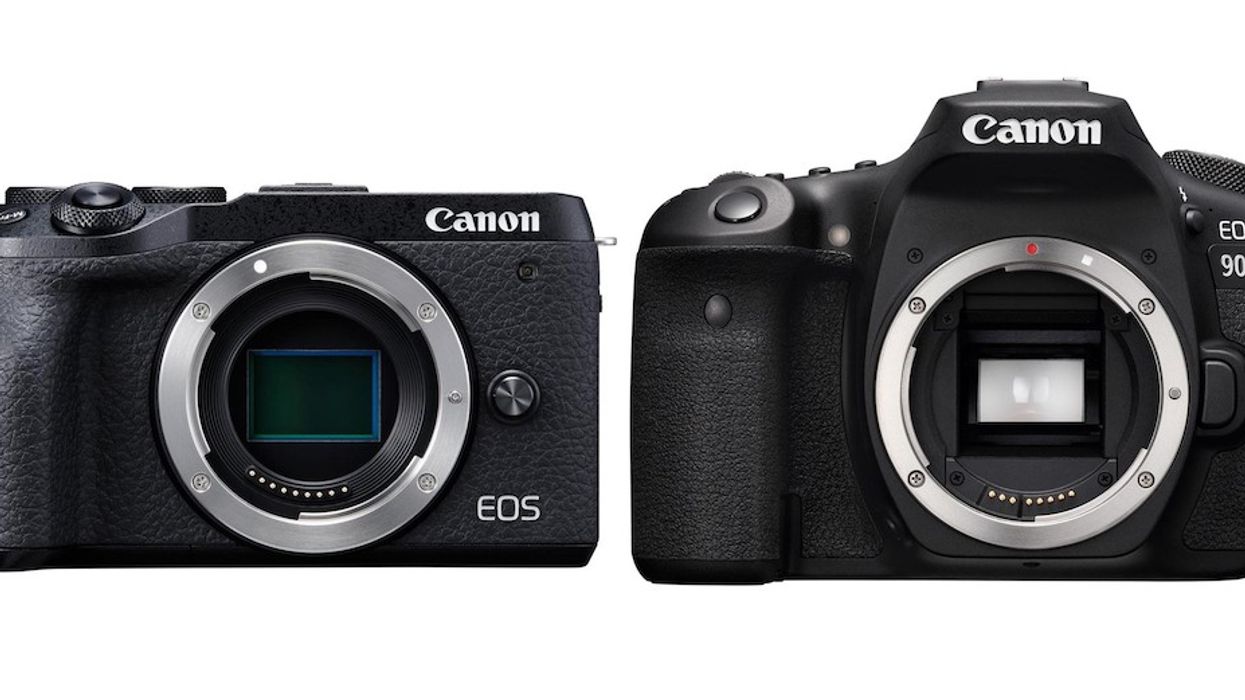Canon Announces EOS 90D and M6 MK II Cameras
And they both shoot 4K video and sport the same 32.5 MP APS-C Image sensor.

Though rumors have been swirling about these two cameras for weeks, Canon officially announced the EOS 90D and its mirrorless cousin the EOS M6 MK II today. Both sport similar 32.5 APS-C Image sensors and a DIGIC 8 processor that is capable of shooting 4K video at 30fps. But other than a basic upgrade, is there really anything exciting about these new cameras?
The upgrades to the EOS 90D give it a boost to 10fps in Burst Mode, along with the ability to shoot 4K video. Meanwhile, the M6 MK II can burst shoot a little faster at 14 fps with AF and AE tracking engaged. The one bright spot may be that it can shoot 4K with eye-detection AF. So, it at least has that. But sadly, still no in-body image stabilization (IBIS) this time around.

Let's take a look at the key features of both cameras.
Key Features
- High Image Quality with 32.5 Megapixel CMOS (APS-C) Sensor.
- High-Speed Continuous Shooting of up to 14 fps with AF/AE Tracking.
- Dual Pixel CMOS AF with 5,481 Manually Selectable AF Positions*, and Eye AF Servo Support.
- 4K UHD 30p / Full HD 120p Video.
- 30fps RAW Burst Mode with Pre-Shooting.
- Electronic shutter with a Minimum of up to 1/16000th.
- Touch & Drag AF with Optional EVF.
- 3.0-inch Touch Panel LCD Screen with Tilt Option.
- New User Controls Inherited from EOS DSLR Camera.
- Built-in Wi-Fi and Bluetooth Technology.
- Mobile RAW Workflow

In fact, outside of that, there really isn't anything particularly remarkable about these two new cameras, other than the basic improvements you'd expect in the "tock" phase of a tick-tock development cycle. Even The Verge speaks about the Canon 90D in a rather ho-hum fashion, referring to it as "just like every other mid-range Canon DSLR," while stating that the M6 MK II form factor is essentially unchanged since the original M6 was introduced back in 2017.
Additionally, both the Canon 90D and M6 Mk. II do not support shooting 4K at anything other than 30p. According to Canon Rumors, this is a trend that has continued since the EOS RP, G7 X Mk. III and II models left out the option when they were launched. This has left a lot of Canon users looking to use a lower-end camera to shoot some more cinematic footage feeling a bit left behind. CR postulates that since Canon would have to pay licensing fees for different encoding versions of AVC, they simply left it out in order to keep the selling price down and still protect a decent profit margin. Considering these are consumer-grade cameras, that does make a lot of sense. Maybe Magic Lantern can return those features down the road.
The Canon 90D will sell for $1199 (body only), while the M6 MK II will set you back $849. Lens kits are available for both. Both cameras will be available next month.












